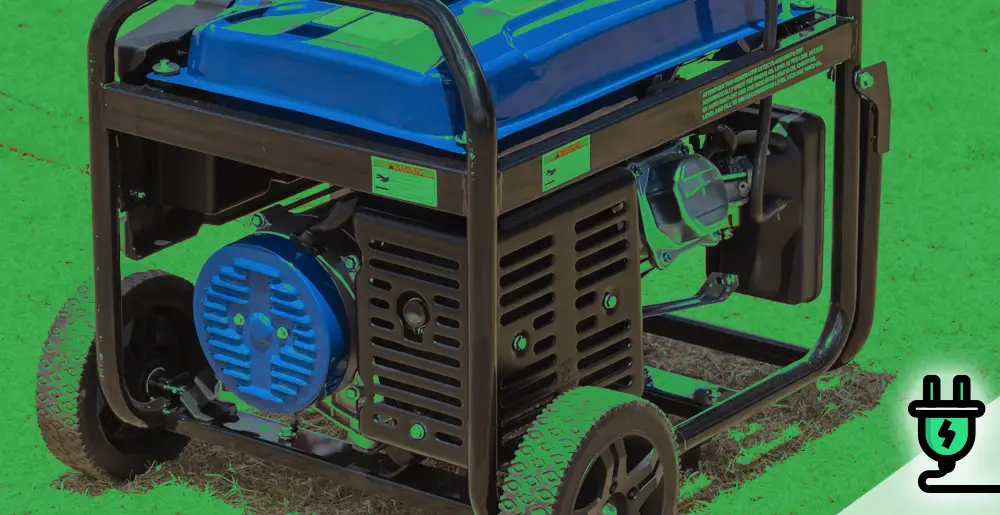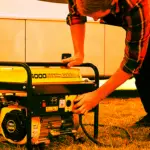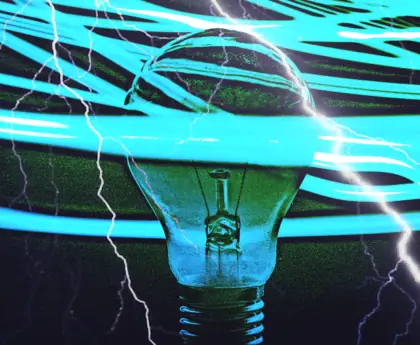Your home is a place of refuge and comfort. It’s a place where you can go to relax, be with family and friends, or get away from the world for a while. But what would happen if your power goes out? What would you do without electricity in your home for a few hours or even days?
There are many things that could cause this to happen- it could be an ice storm, hurricane, tornado, earthquake, or any other natural disaster. Having a portable generator to power your home is a smart way to prepare for such emergencies.
But how do you figure out what size emergency generator you need? In this post I’ve compiled a list of the most important factors that will affect the size emergency generator you need to help you make an informed decision.
- How generators are sized
- What size emergency generator do I need for my home?
- Whats the difference between starting watts and running watts?
- Do natural gas appliances require electricity?
- Powering just the essentials
- Common emergency generator wattage
- Finding the perfect generator to power your home is easy
How generators are sized
Portable generators are rated based on wattage output, not physical size. It’s important to get the right one for your total power needs. If you have too much power on hand then excess wattage will just end up being wasted or overheated by inefficient equipment. It’s better if you can find a generator that has enough capacity but still remain efficient and reliable.
Let’s first examine how much electricity the most common appliances require so you get an idea of the total wattage requirements needed.
Efficiency is key when it comes to power. Your generator should be able to handle all your needs without using more than 90% of its capacity
What size emergency generator do I need for my home?
If you are looking for a generator that is perfect for your home, you first need to determine how much power will be needed from an emergency generator. This can be done in three simple steps:
Step 1: Collect the required wattage for each appliance you would like to run simultaneously. Then total these wattage numbers. This provides you with the number of continuous or running watts your generator must supply.
Step 2: Now select the largest number of starting watts assigned to the appliance you wish to use. (Not all will require a starting wattage)
Step 3: Total these two numbers and this will indicate the size generator required to meet your needs.
* If the appliances only list an Amp rating, you will need to convert to watts using this Amp to Watts calculator.
How to calculate total wattage? There is a formula that you need to follow. Written out formulaically it’s: (Total wattage + Starting wattage of largest item = Total wattage power needed.
As an example, let’s say I need to power a refrigerator, sump pump, and electric water heater. The total wattage needed for these appliances is: 7,600 watts.
If you need a guide for general power requires for appliances or electronic devices, we have some guides here.
Now we can use this number to guide what size generator you need so that it can produce enough electricity for your home needs. Let’s continue.
Whats the difference between starting watts and running watts?
Appliances with motors almost always require a starting wattage. This is because the motor needs to turn over and create resistance, which requires energy in order for it work efficiently.
Here are the most common appliances that require a starting wattage:
- Refrigerator
- Freezer
- Furnace blower fan, gas or fuel oil
- Washer and dryer
- Central air or window air conditioner
Do natural gas appliances require electricity?
Yes! Appliances that are powered by natural gas also require electricity to run. Electronic ignition systems are required to ignite and start up the appliance. So remember to include these in your wattage total.
Powering just the essentials
In an emergency, the most important appliances in your home should be powered. You will need to consider that when it comes to power usage all appliances and electronic devices have different needs. As an example, here is a break down of some common appliances you may want to power and their power requirements:
- Refrigerator: 600 running wattage – 2,200 starting wattage
- Washing machine: 750 running wattage – 1,200 starting wattage
- Sump pump: 800 running wattage – 1,400 starting wattage
- Microwave oven: 700 running wattage – 800 starting wattage
- Cell Phone: 2 to 6 watts for each phone
- Electric water heater: 4,000 watts
Total wattage for just the essentials = 9,056. Since we do not want to use more than 90% of a generators capacity, a 9,500 wattage generator would suit our needs perfectly.
Common emergency generator wattage
Now that we know how to find the total wattage needed, choosing a generator capable of supplying adequate power is easy. When shopping for a generator, typical wattage outputs you will find are the following:
- 999 watts are under
- 1,000 to 1,999 watts
- 2,000 to 3,999 watts
- 4,000 to 5,999 watts
- 8,000 to 9,999 watts
- 10,000 to 15,999 watts
Finding the perfect generator to power your home is easy
Choosing the right generator for your home is a process that requires some research and consideration. Whether you’re looking to power up just the essential appliances or the whole home, I hope this post has provided enough information to help identify the size generator that will work best in your situation. By following these steps and taking the time to consider your needs, you will be able to find a generator that is perfect for powering your home.






